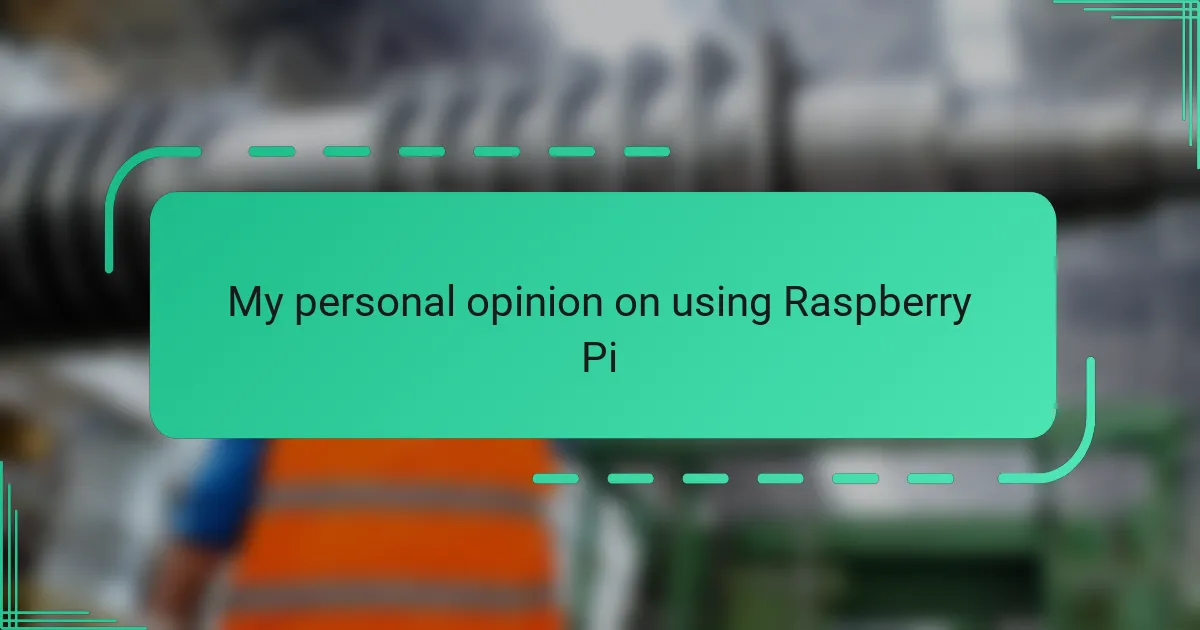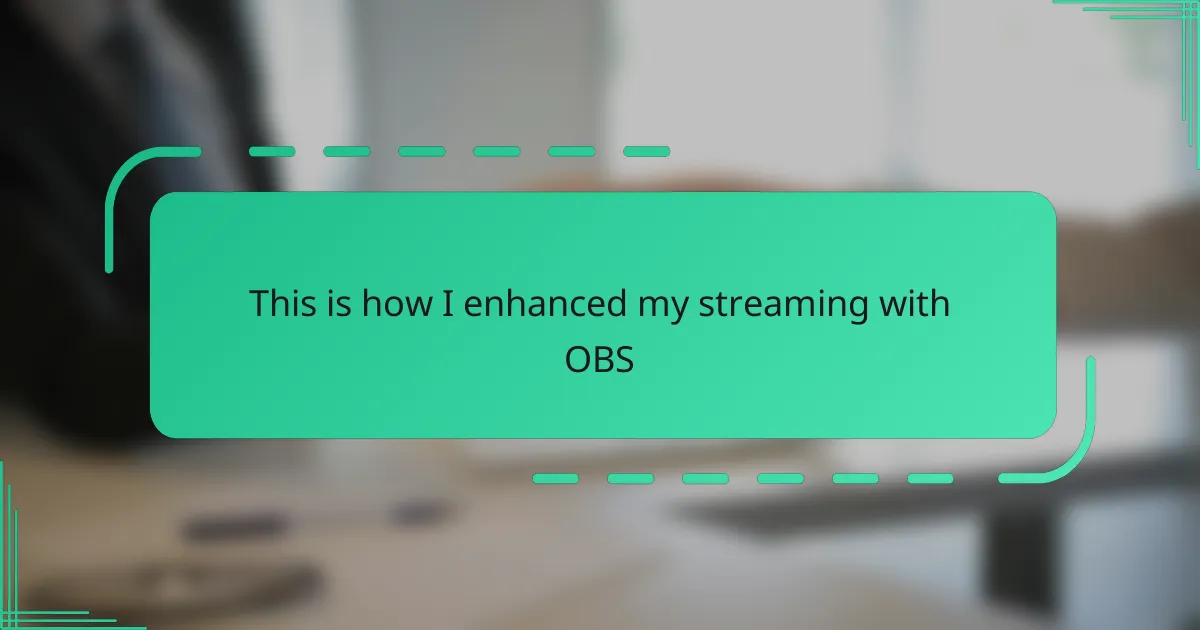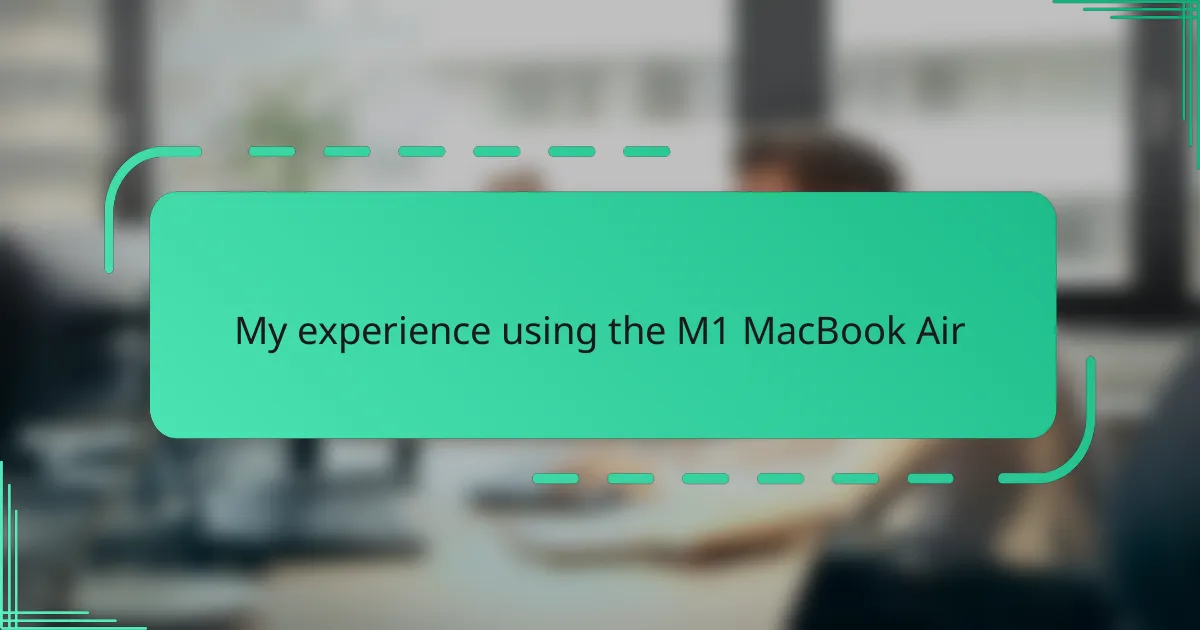Key takeaways
- The Raspberry Pi is an affordable, versatile mini-computer that encourages creativity and experimentation, making it accessible for all skill levels.
- It offers low power consumption and a rich ecosystem of accessories, allowing users to explore various projects without significant costs.
- Challenges include limited processing power and setup quirks, but these experiences help build resilience and technical skills.
- Sharing projects and engaging with the community fosters collaboration and learning, making the Raspberry Pi journey even more rewarding.
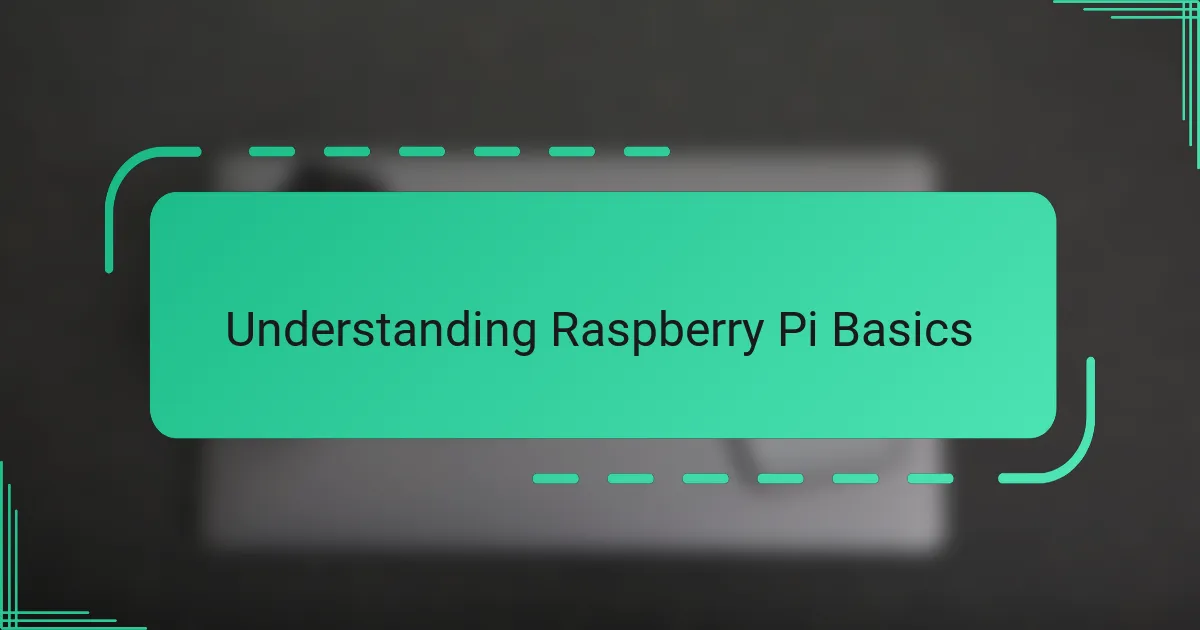
Understanding Raspberry Pi Basics
At its core, the Raspberry Pi is a tiny, affordable computer that fits in the palm of your hand. When I first opened mine, I was surprised by how compact yet powerful it felt—like holding a mini gateway to endless possibilities. Have you ever imagined having a fully functional computer for less than the price of a typical coffee?
What fascinates me about the Raspberry Pi is its simplicity. You don’t need advanced technical skills to get started; a bit of curiosity and patience goes a long way. I remember my first project involved just connecting it to a screen and running a few commands, and that hands-on experience instantly felt rewarding.
The beauty of understanding the Raspberry Pi basics lies in realizing its versatility. It’s more than just hardware; it’s a platform that encourages experimentation and creativity. Don’t you think that something so accessible can open doors for beginners and experts alike? This mindset is what makes Raspberry Pi such a beloved tool in the tech community.
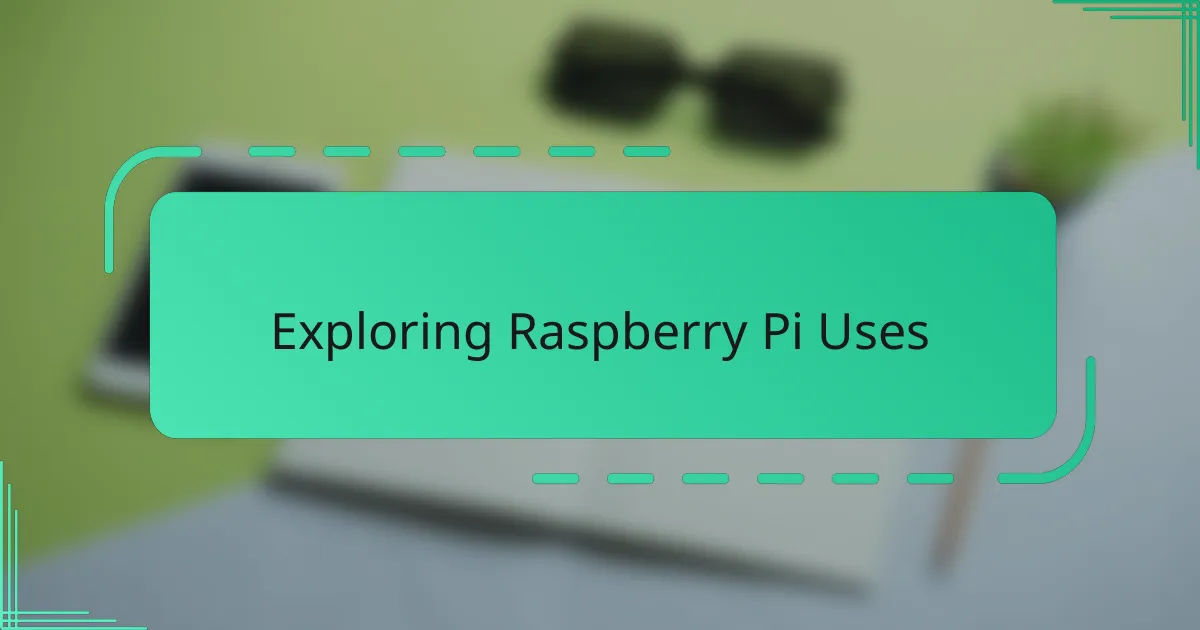
Exploring Raspberry Pi Uses
Diving into the uses of a Raspberry Pi truly changed the way I approach technology projects. From building a simple home media server to automating my garden watering system, I was amazed at how this tiny device adapted to so many roles with ease. Have you ever felt the thrill of turning an idea into reality with just a few lines of code and a humble piece of hardware?
One project that sticks out in my memory is when I transformed my Raspberry Pi into a retro gaming console. The nostalgia mixed with the satisfaction of making it work perfectly reminded me why tech can be so endlessly captivating. It made me realize that the Pi isn’t just for serious coding—it’s also about fun and unlocking creativity in unexpected ways.
Exploring its uses also taught me about community. I found myself diving into forums, sharing tips, and discovering projects I never would have considered on my own. Isn’t it incredible how a small device can connect you to a global network of makers and innovators? That shared spirit is what keeps me coming back to the Raspberry Pi again and again.
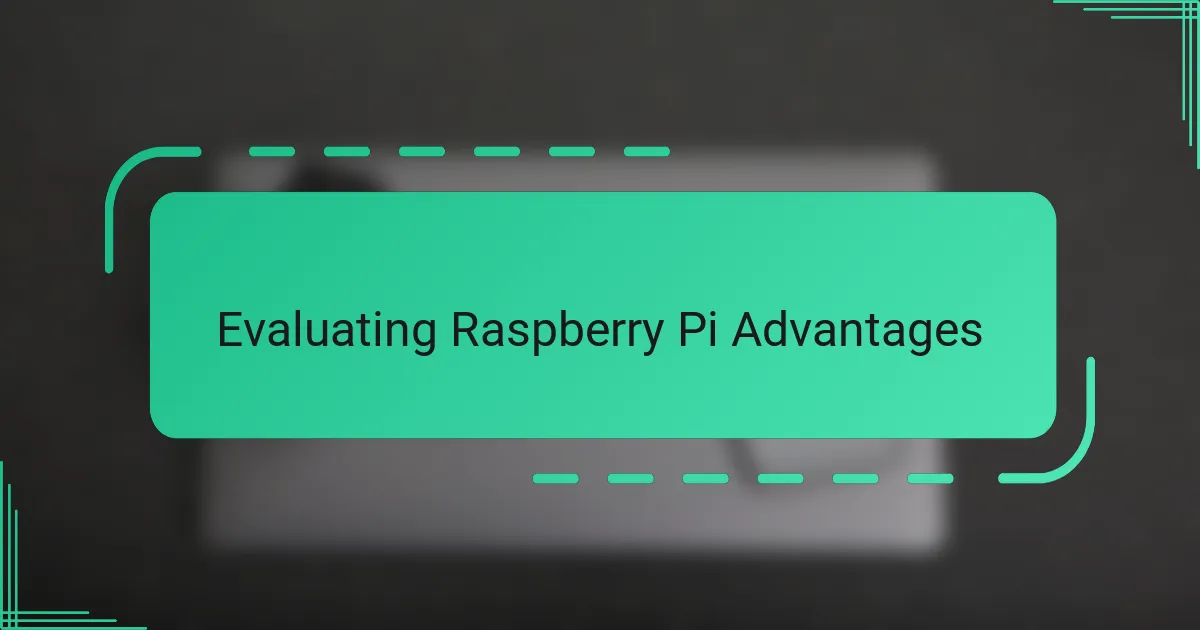
Evaluating Raspberry Pi Advantages
What really stands out to me about the Raspberry Pi is its affordability without sacrificing functionality. For the price of a few cups of coffee, I got a fully capable computer that could handle a surprising range of tasks. Isn’t it remarkable how accessible technology has become when you think about the alternatives?
Another advantage I appreciate is its low power consumption. I once ran a Raspberry Pi as a 24/7 home server and barely noticed a dent in my electricity bill, which made the whole experiment feel sustainable and practical. Have you ever tried keeping a device running nonstop and actually enjoyed watching the power usage stay minimal?
Finally, the vast ecosystem of accessories and software made the experience feel limitless. From add-on cameras to countless programming languages and operating systems, the Raspberry Pi effortlessly adapts to whatever project I’m passionate about at the moment. Doesn’t that kind of adaptability make tinkering much more exciting?
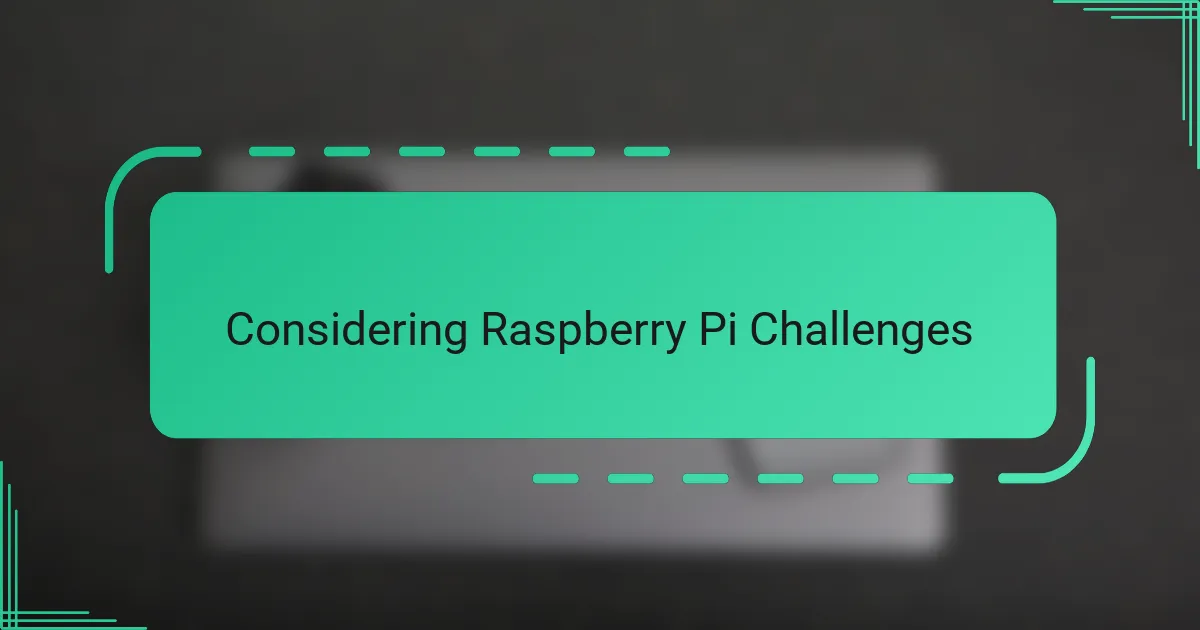
Considering Raspberry Pi Challenges
One challenge I often faced with the Raspberry Pi was its limited processing power compared to a full-sized computer. I remember attempting to run multiple heavy applications simultaneously and quickly realizing the Pi wasn’t built for that kind of multitasking. Have you ever been excited to push your device only to have it remind you of its modest roots?
Another hurdle comes with the setup quirks. Early on, I spent more time troubleshooting connectivity and compatibility issues than actually building projects. It made me appreciate how patience and persistence are just as important as technical know-how when working with the Pi. Didn’t those troubleshooting moments teach you resilience too?
Lastly, the Pi’s reliance on external components means costs and complexity can sneak up unexpectedly. While the base device is affordable, adding sensors, screens, or other peripherals can quickly add to the budget—and the learning curve. Have you ever been surprised by how one small project can turn into a full-blown electronics adventure?
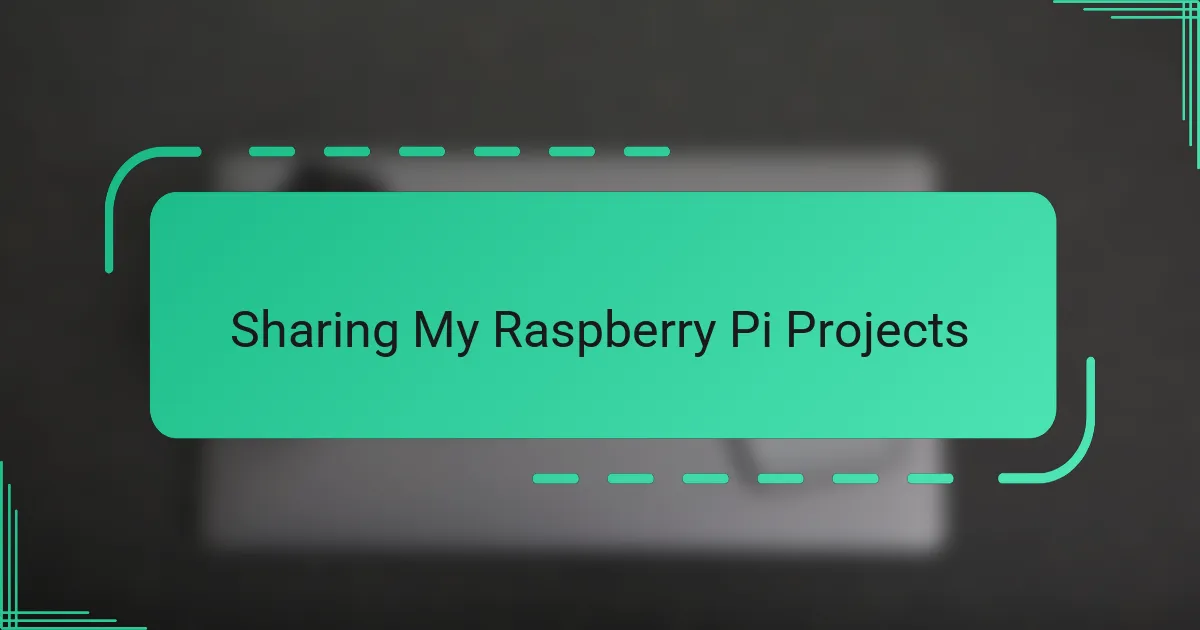
Sharing My Raspberry Pi Projects
Sharing my Raspberry Pi projects has been one of the most rewarding parts of my journey with this device. I recall the excitement of posting my first smart mirror build online and seeing how others responded with their own tweaks and ideas—it truly felt like joining a global conversation. Have you ever shared a project and found that it opened doors to new friendships and collaborations?
Sometimes, sharing also means being honest about the hiccups. I once documented a weather station project that didn’t go as planned, with sensors failing and data glitching—yet the feedback I received helped me troubleshoot and improve. Isn’t it comforting to know that the community supports learning through trial and error?
Beyond just posting results, I like to write step-by-step guides for my projects, breaking down complex tasks into manageable pieces. That process not only solidifies my own understanding but also helps others get started without overwhelm. Don’t you think making technology approachable is one of the best gifts we can share?

Conclusion and Personal Recommendations
Looking back on my Raspberry Pi experience, I’m convinced it’s a fantastic entry point into the tech world for almost anyone. Its blend of affordability, versatility, and a supportive community makes it a tool I keep coming back to. Have you ever found a gadget that keeps surprising you with new possibilities every time you pick it up?
If you’re thinking about diving in, my advice would be to start small and embrace the challenges. That initial setup frustration or the occasional hardware hiccup might seem daunting, but they’re part of the journey that teaches you more than straightforward success ever could. Isn’t that learning through hands-on experience what makes tech projects truly memorable?
Above all, I recommend using the Raspberry Pi as a playground for creativity rather than just a device to get tasks done. Whether it’s turning old hobbies into digital projects or experimenting with new ideas, this little computer has become my favorite kind of companion—one that encourages curiosity, patience, and a lot of fun along the way. Wouldn’t you agree that enjoying the process is just as important as the outcome?
